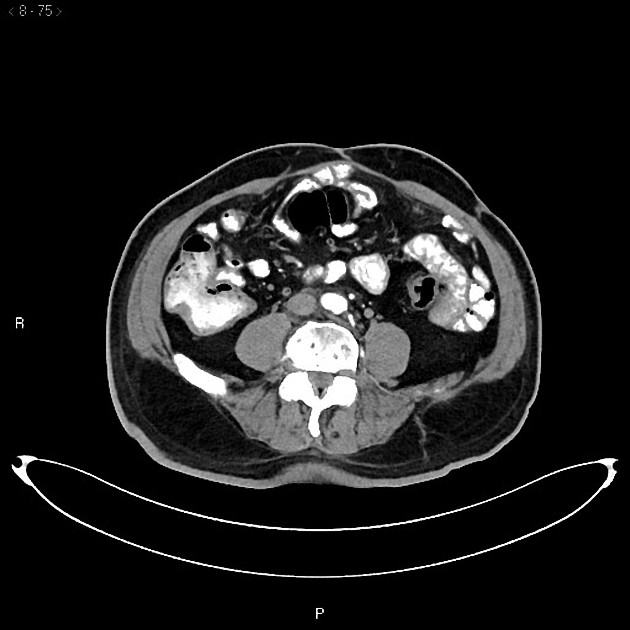Presentation
Colon cancer follow-up. No pain or other symptoms are reported.
Patient Data

The pancreas can not be defined accurately due to extensive fatty infiltration. Additional findings include post-surgical changes associated with transurethral resection of the prostate, as well as an important increase in the volume of the prostate, changes by resection with anastomosis in the left hemicolon without any mural thickening suspicious for malignancy, multiple calcified atheromas in the abdominal aorta, pneumatized cecal appendix without inflammatory process, mild diastasis of rectus abdominis muscles and degenerative changes of the lumbar spine with a levoconvex lumbar scoliosis.
Case Discussion
In pancreatic lipomatosis, there is a fatty replacement of the pancreatic parenchyma, as an incidental finding in this study, in which it was performed for the follow-up of colon cancer. It is most often associated with obesity and aging. Frequent causes of pancreatic lipomatosis are metabolic (diabetes mellitus, hyperlipidemia), use of steroids, alcoholic hepatitis, and chronic pancreatitis. The differential diagnostic considerations include pancreatic agenesis or mass.




 Unable to process the form. Check for errors and try again.
Unable to process the form. Check for errors and try again.